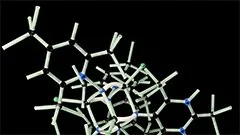Introduction
The stability and variability of genomes are crucial aspects in the field of molecular biology, as they significantly influence the functioning, evolution, and adaptation of organisms. This course aims to provide a comprehensive understanding of these concepts, focusing on the mechanisms that maintain genome stability, the factors causing genetic variations, and the consequences of such variations at the molecular, cellular, and population levels.
Definition of Genomes and Genetic Variability
A genome is the complete set of DNA molecules present in a cell or organism, containing all the information needed for the development, functioning, and reproduction of that organism. Genetic variability refers to differences in the genetic material among individuals within a species or between different species.
Maintaining Genome Stability
Replication Fidelity
During DNA replication, enzymes copy the genetic information from one DNA molecule (the template) to another (the new strand). To ensure replication fidelity, several mechanisms are in place, such as proofreading by DNA polymerases and the mismatch repair system.
DNA Repair Mechanisms
DNA is continuously subjected to various forms of damage, which can lead to mutations if not repaired. Several DNA repair pathways exist, including base excision repair, nucleotide excision repair, and double-strand break repair, each addressing specific types of DNA damage.
Chromosomal Stability
Chromosomal stability is crucial for the proper segregation of genetic material during cell division. Mechanisms such as telomere maintenance, sister chromatid cohesion, and the spindle assembly checkpoint ensure correct chromosome behavior.
Sources of Genetic Variations
Mutation
Mutations are changes in the DNA sequence that can occur due to errors during replication, exposure to mutagenic agents, or spontaneous events such as DNA methylation and demethylation.
Spontaneous Mutations
Spontaneous mutations include point mutations (single nucleotide changes), frameshift mutations (insertions or deletions of multiple bases), and chromosomal mutations (translocations, inversions, etc.).
Induced Mutations
Induced mutations are those caused by exposure to mutagenic agents like UV radiation, ionizing radiation, or chemical mutagens.
Recombination
Recombination is the process by which genetic material is exchanged between DNA molecules during meiosis and some forms of mitotic cell division. It plays a vital role in generating genetic diversity within populations.
Crossing Over
Crossing over, or recombination between homologous chromosomes, results in the shuffling of genetic material between parental chromatids, leading to new combinations of alleles in the offspring.
Gene Conversion
Gene conversion is a non-reciprocal form of recombination where one allele is replaced by a portion of its homologous partner's sequence. This process can lead to gene conversion tracts, where large stretches of DNA are converted from one allele to another.
Consequences of Genetic Variability
Adaptation and Evolution
Genetic variability provides the raw material for evolution, allowing organisms to adapt to changing environments. The ability to generate genetic diversity is critical for species survival in the face of environmental changes, pathogens, or competition with other species.
Disease Susceptibility
Alterations in the genome can contribute to disease susceptibility by affecting gene function, regulatory regions, or interactions between genes and their products. Understanding the genetic basis of diseases can lead to improved diagnostic tools and targeted therapies.
Future Directions
The study of genome stability and variability continues to evolve as new technologies emerge, allowing for the analysis of genomes at unprecedented resolution and scale. These advancements open up exciting opportunities in areas such as personalized medicine, crop improvement, and understanding the mechanisms underlying complex traits and diseases.
MCQ: Test your knowledge!
Do you think you know everything about this course? Don't fall into the traps, train with MCQs! eBiologie has hundreds of questions to help you master this subject.
These courses might interest you
Create a free account to receive courses, MCQs, and advice to succeed in your studies!
eBiologie offers several eBooks containing MCQ series (5 booklets available free for each subscriber).




